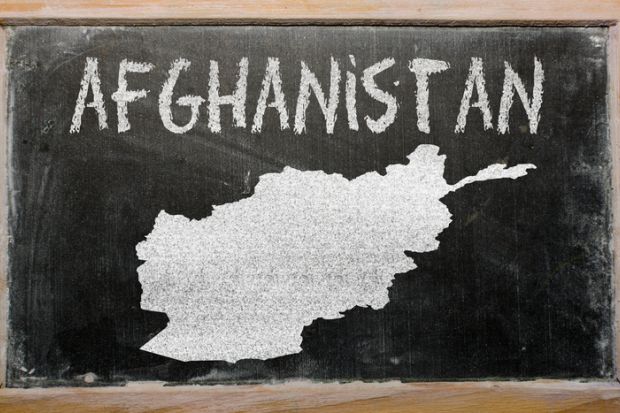When the Taliban was overthrown in 2001, in the wake of 9/11, Afghans dared to dream of living in a country with a brighter future.
The previous decades of war and political upheaval were widely blamed on the country’s high levels of illiteracy and the manipulation of Afghans’ lack of education by foreign nations near and far. Education was believed to be the key to finally putting the nation on the path of development and success.
Twenty years on, those hopes were coming close to being realised. With the considerable help of international donors and NGOs, millions of Afghan children had been enrolled in private and public schools, and those who completed their baccalaureates had the opportunity to attend an array of private and public higher education institutions established across the country – or else apply for a government scholarship to pursue their studies abroad.
Following and attaining international standards was seen by the Ministry of Higher Education as crucial. Academics were enrolled in international exchange and faculty development programmes, and in 2016 they began to be trained in outcome-based education and student-centred learning. The ministry also joined international quality assurance networks, such as the International Network for Quality Assurance Agencies in Higher Education.
Afghan universities signed memoranda of understanding with a number of regional and international universities in the spheres of research collaboration, curriculum training, exchanges programmes and scholarships. They also responded to ministry promptings to promote the use of international e-learning platforms, such as EdX, and to upload their own teaching materials to a dedicated microsite on edX, known as AfghanX, allowing students to access them any time and from anywhere. The ministry even designed a national online teaching and learning platform (HELMS), and encouraged university lecturers to use it for teaching, learning and assessment.
The ministry also updated the curricula of almost all fields within science and social science based on international standards and OBE-SCL principles. And it introduced rules and regulations that encouraged faculty to conduct rigorous research into the various problems of Afghan society, offering grants (I was one of the recipients) on condition that findings were published in reputable international journals. Hundreds of Afghan lecturers heeded the call.
Progress wasn’t perfect. The government mostly focused on the quantity of the education rather than its quality, and corruption among higher-level officials meant that international donations did not always find their way to their intended destinations. Those regions furthest from Kabul, in particular, were afforded fewer development opportunities. However, Afghan higher education has unquestionably improved enormously over the past 20 years and has begun to stand on its own two feet on the international stage.
But now with the Taliban back in power, all of that has been thrown into doubt.
Like most other Afghan sectors, higher education has been suspended while people work out what the takeover means for them and process the aftermath of yet more fighting and fatalities. Some international organisations, such as the World Bank, have halted financial aid, which will hit the higher education programmes they fund. These include international scholarships, and thousands of students already studying abroad for their bachelor’s, master’s and doctoral degrees are concerned about whether their funding will be cut off, and their career aspirations dashed.
Taliban leaders have repeatedly said in their media statements that they are committed to maintaining the developments made in all sectors during the past two decades, particularly higher education. And they emphasise that Afghans should ignore any rumours to the contrary. But no one is sure what to believe.
For instance, university lecturers have been dismayed by the Taliban’s apparent appointment of a new chancellor at Paktia University, south of Kabul. Paktia’s official Facebook page reported the replacement of the former chancellor, who has a PhD, with the new one, who only has a bachelor’s degree in Sharia. After the appointment was criticised on social media, the Taliban said that this figure will actually be responsible for monitoring all of the schools and universities in the Paktia province: a much higher position than chancellor. But the Facebook page shows the new and former chancellors standing together, and it makes clear the new one will be lecturing at the university.
Such incidents call into question the Taliban’s professed support for higher education institutions. And many questions remain unanswered. What will happen to the university curricula updated recently? Will the Taliban allow women to continue to study at tertiary level? Will female lecturers be allowed to pursue further studies abroad? More generally, will the Taliban maintain training, educational and scholarship opportunities for Afghan teachers, students and graduates?
We just don’t know. But we are all praying that 20 years of progress isn’t just swept away in the blink of an eye.
Rahmatullah Katawazai is a lecturer at the Faculty of Languages and Literature at Kandahar University, Afghanistan.




